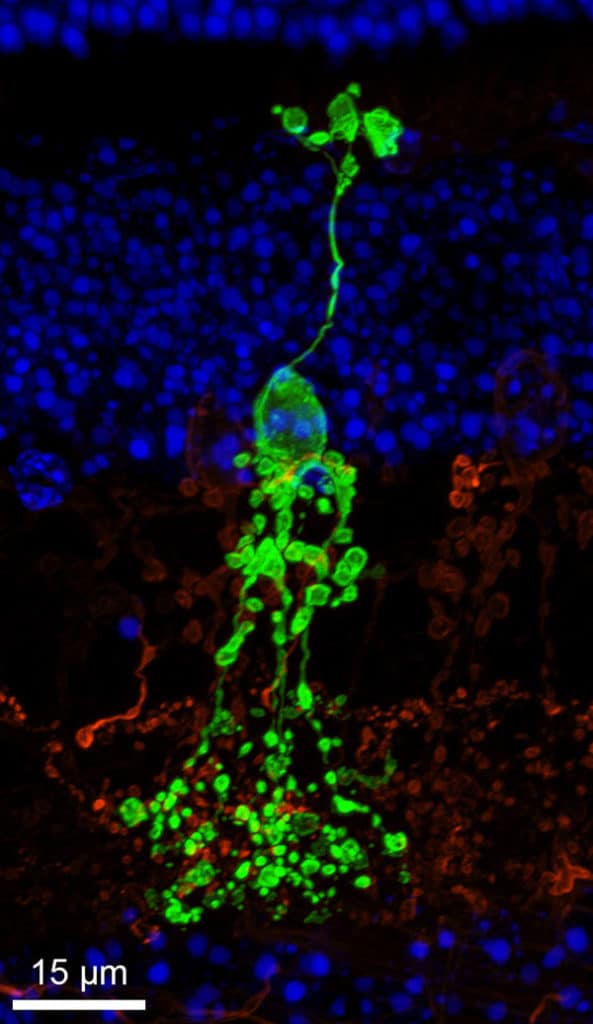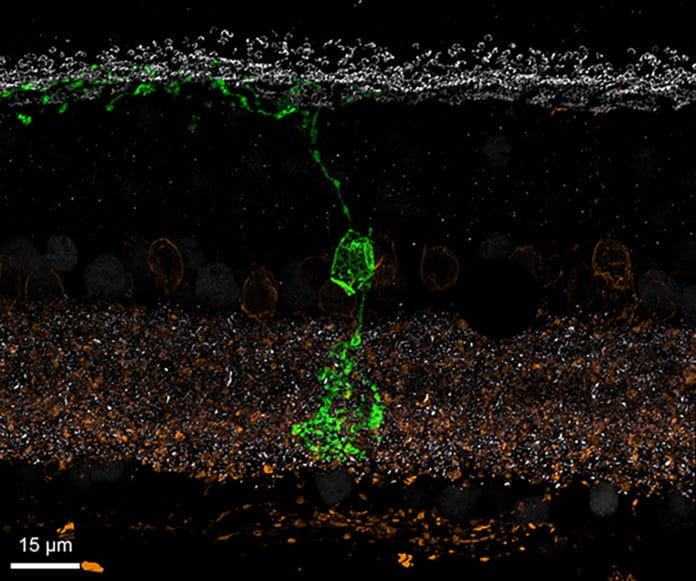A complex circuitry of neurons within the central nervous system interacts to relay sensory and motor information. In other words, these interneurons act as intermediaries in the chain of communication.
Recently, scientists at the John A. Moran Eye Center at the University of Utah have discovered a new type of nerve cell, or neuron, in the retina. This discovery is an essential step towards a better understanding of the central nervous system by identifying all classes of neurons and their connections.
A research team led by Ning Tian, Ph.D., said, “Based on its morphology, physiology, and genetic properties, this cell doesn’t fit into the five classes of retinal neurons first identified more than 100 years ago. We propose they might belong to a new retinal neuron class by themselves.”

Based on its shape, this newly discovered nerve cell has been named the Campana cell. Campana cells relay visual signals from both types of light-sensing rod and cone photoreceptors in the retina, but their precise purpose is the subject of ongoing research. Experiments showed Campana cells remain activated for an unusually long time—as long as 30 seconds—in response to a ten-millisecond light flash stimulation.
Tian said, “In the brain, persistent firing cells are believed to be involved in memory and learning. Since Campana cells have similar behavior, we theorize they could play a role in promoting a temporal ‘memory’ of current stimulation.”
Journal Reference:
- Brent K. Young et al. An uncommon neuronal class conveys visual signals from rods and cones to retinal ganglion cells. DOI: 10.1073/pnas.2104884118
